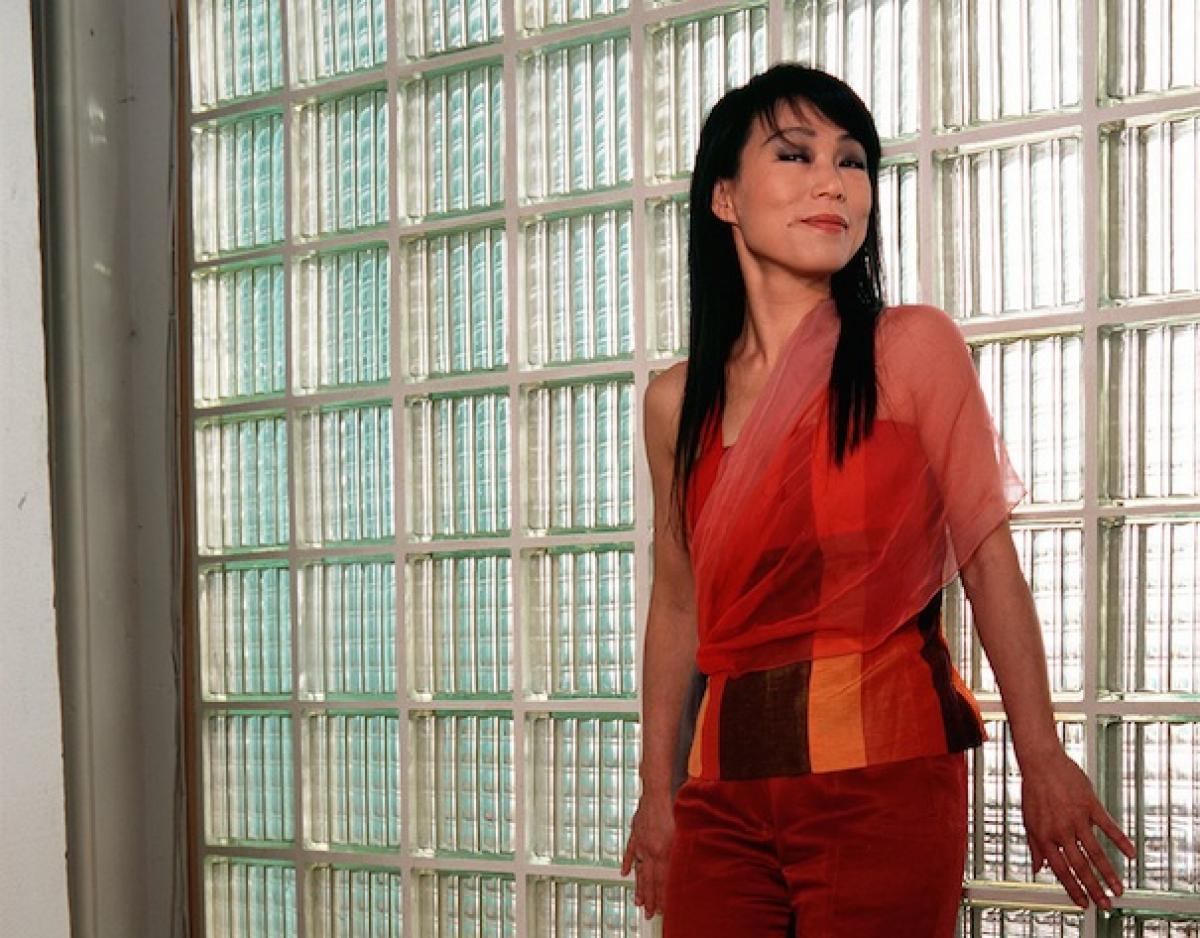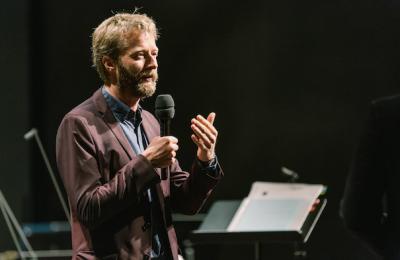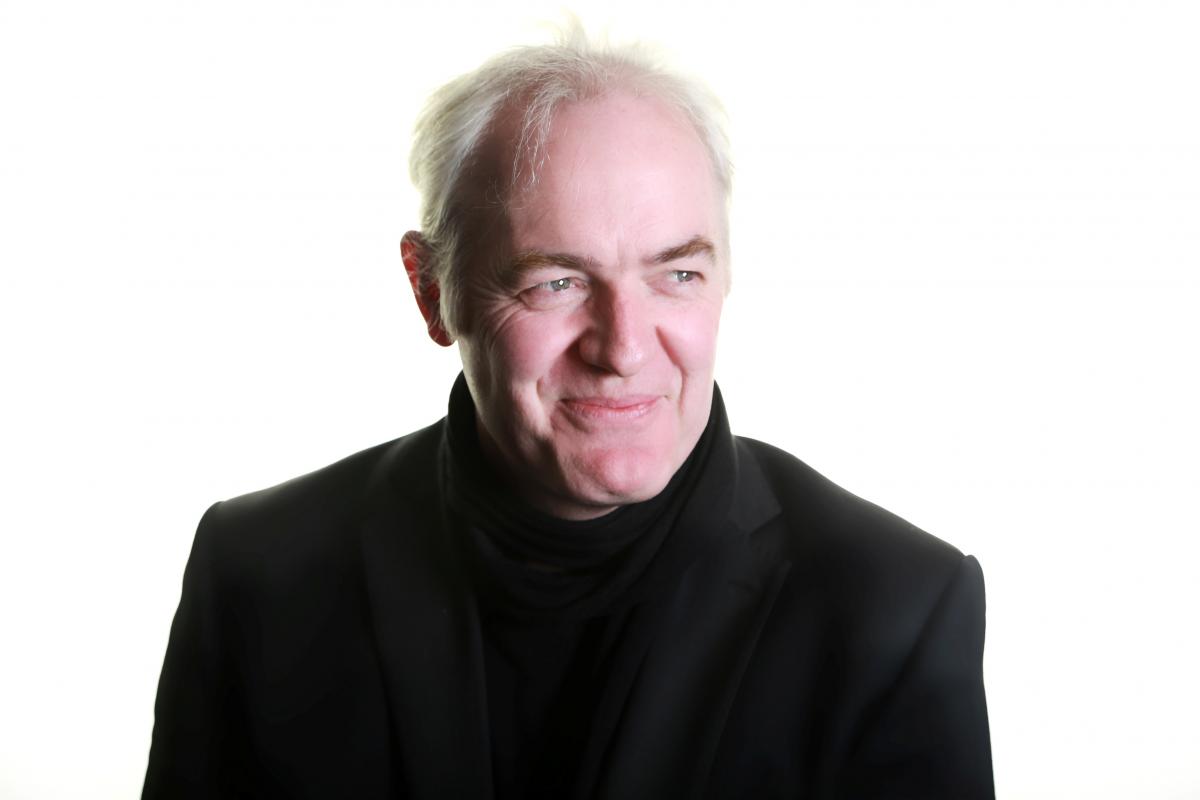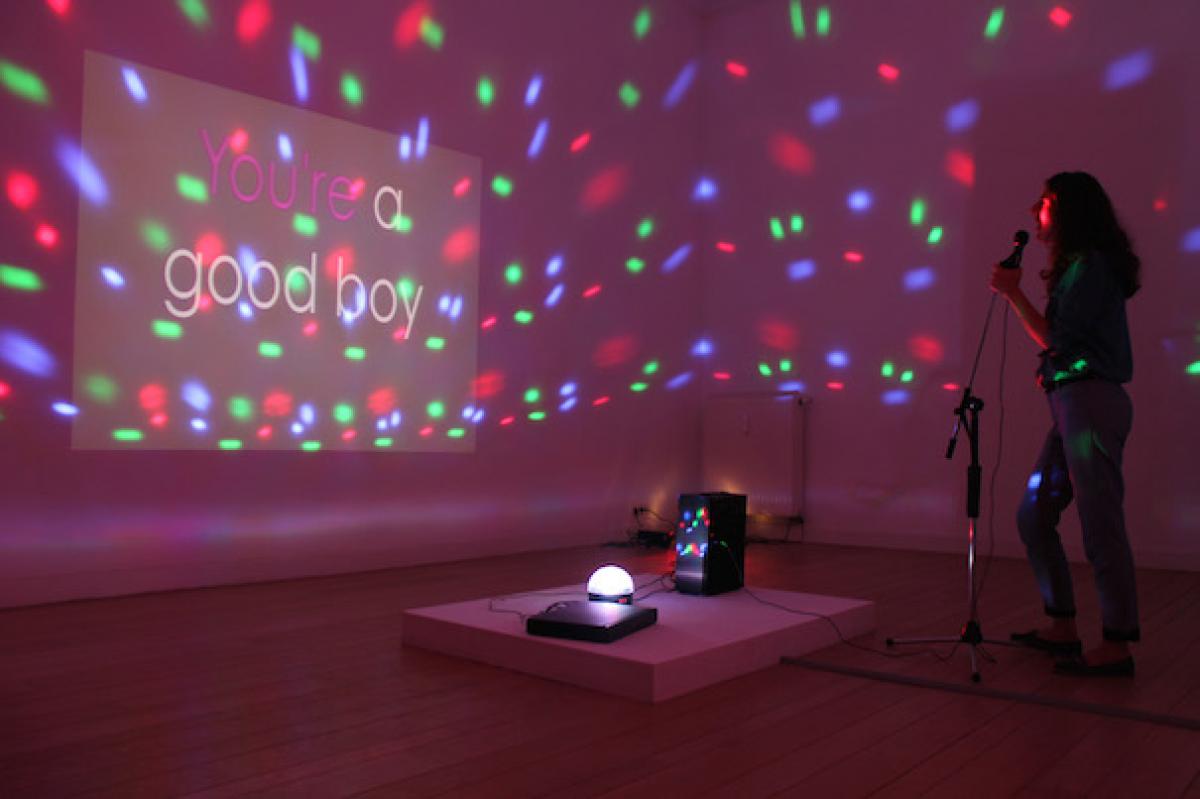
Beyond Voice
With her new solo show Beyond Voice. Me, you and everyone who is listening sonic and radio artist Anna Raimondo is exploring the relational horizon of voice and its linguistic and political implications. On the occasion of the screening of Raimondos show at Arte Contemporanea in Brussels curator Lucia Farinati spoke on March 20th 2014 with Raimondo about her project, the idea of resonance and feminism.
[Lucia Farinati]: What is voice for you, and why the title Beyond Voice?
[Anna Raimondo]: To me, voice is not just a mere sonic phenomenon, it is something more. This is why I chose Beyond Voice. However, what I am interested in the most is what follows the voice, its implications, what voice could provoke.
[LF]: You started your research as a radio journalist. What is the difference, if any, between using the voice as a radio broadcaster and as an artist?
[AR]: With radio, I feel more protected, I am just a voice, whereas when I am speaking in public spaces the degree of responsibility is different, because I assume much more with my own body, in that particular moment, and with what I am saying. When I am there, with my voice and body, I launch questions which, most often, are not immediately answered; but I like to think that my voice arrives at the people around and, if they decide to listen to me, they can create their responses within themselves.
[LF]: So, if you don’t hear people replying to you, do you imagine what they might be saying to themselves?
[AR]: Sometimes, my questions are direct, and so I really look for answers. In some of my sonic interventions and performances, I even give instructions to the public... but in other cases, and more and more often now, the exchange has become more conceptual, more metaphoric. In this sense I also use the expression beyond voice. Indeed, voice for me does not exhaust itself with the emission of sounds, it is a possibility to build a bridge, even if that’s an ephemeral kind of bridge. Voice is a process that doesn’t stop in the moment you hear me, my voice continues to exist after you have been listening to me, when you are still thinking of me or «reading» me, or simply remembering something that I have just said. So, all of these examples relate to the phenomenon of beyond voice.
[LF]: This is very much connected to the idea of resonance, the idea that at some stage your voice, your words, will start resonating within the other, within me.
[AR]: Yes, I will say there is a resonance, as you put it, and there is also a desire to contaminate the space around me... This is the reason why I often work with sound and with the voice; but I also define myself as an artist working with listening, because listening is a way to penetrate the other, in a precise moment, in a way that you cannot always control. I am very interested in this actually, and this is the reason why I recently moved from the radio to the public spaces, to urban space, because it’s even more evident, no?
[LF]: Resonance always implies two bodies which can respond to each other, something that sounds and resounds. Maybe you can say more about this...
[AR]: A lot of time I don’t see what happens after... but I can feel it... In the project Encouragements I have asked over forty women to send me any encouragement that helped them to affirm themselves in life and society.
What I did after was to embody these encouragements, these women’s voices, and simulate a conversation at the phone in public spaces. I am very curious about this listening device, very fascinated by talking over the phones because most of the time people forget they are in a public space, they get very involved in their own private sphere, speaking loudly and telling their own things... It’s a way of declaiming, of contaminating their surroundings... Coming back to the work, what followed was a dialogue not linear at all... mostly composed of more traditional statements about life, fears, desires, whereas at some other moments I was just saying «mother», «mother», the encouragement of a friend of mine whose child in those days had just started to pronounce this word. I did this in public spaces because it’s a way to contaminate what is around me... though I don’t know the reaction of all the others: I just saw some people laughing, or people being disturbed and going away, or somebody looking at me with a kind of complicity; but I don’t know what their interior voice was saying, and this is the invisible contamination which I am interested in.
[LF]: It seems to me that beyond voice – beyond the voices, if you like, as you are talking of the specific voice of these women, or your own voice – is envisaging an idea of listening which is neither active or passive. I wonder if for you there is any difference to listen to voice rather than any other sound. How do you listen to voice?
[AR]: At this moment, I am thinking of those works made of voices which explore the sonic possibilities of voice. In this case I can have an experience of voice as any other sound; in general, though, when I am listening to voices, independently from what they are saying and I can understand or not, it is a different experience. Even when I am listening to just a laugh, a cry, or a scream, my experience is totally different, because voice always implies a human behind it. It is easier that voices reveal to me a sense of empathy or a sense of repulsion. Sounds, in general, can evoke sonic memories, that’s for sure, but voices probably do it in a deeper way than other sounds. This is my experience, of course.
[LF]: It has been often said that the voice stands at the intersection of body and language, but this intersection, as Mladen Dolar, has remarked, belongs to neither. I would like to read you a passage from his book A voice and nothing more (2006). He said that apart from the two widespread uses of the voice, «the voice as the vehicle of meaning» (forming words, sentences, or phonemes), and «the voice as the source of aesthetic admiration» – the idea of «bella voce», there is a third level in which we can think about the voice: the voice as object, a object voice which functions «as a blind spot in the call as disturbance of aesthetic appreciation». Dolar talks about those manifestations of the voice outside speech such as coughing, hiccups, laughter, babbling, screaming which are defined as pre and post linguistic acts. Again this can be perhaps a way to understand voice beyond the common notion of language and meaning, and instead embracing an idea of voice which is more oriented towards body, affect, memory, as you said. In the past you have also been interested in languages and translation, often highlighting that the grammatical subject «I», is not an abstract subject but an embodied subject. In this new body of work it seems that the voice has become a tool to provoke a situation, to explore different modes of communicating or even to create a possibility for an encounter. But in these actions there is always an element of deconstruction or détournement which seems to be linked to a feminist approach and its attempt to critique categorised notions of subjectivity.
I am thinking for example of your performance outside the Tate, Untitled (the stranger, the water and what I am), and at the same time of the work by feminist philosopher Adriana Cavarero For more than one voice. Toward a philosophy of vocal expression (2005). In this book she talks about female myths related to voice, the siren, for example. Cavarero argues that the vocal expression has often been associated with the feminine and the body, and consequently removed from discourse, from logos. In your performance the voice is not that clichéd voice of the seductive and enchanting siren. The work is clearly about female identity. I wonder if this is a conscious decision because I know you have been involved in feminist activism in the past, collaborating with Radio Mujer in Madrid for example. What does feminism mean for you today?
[AR]: Actually, feminism is for me the expression of a desire, a way to feel comfortable with life and with who I am. It’s a research, of course, full of contradictions. I started with being a feminist activist whilst working with radio. I respect a lot activism, but at some point I felt that the militant language was no longer the one I wanted to use and that I needed to open, and to be open, to what I see as the outside. This is probably why I decided to move to art. Then, about the performance you were mentioning before, let’s say that for me it is feminist to the extent that it derides all categorised definitions of myself. In the performance, I am telling what I am, though whatever I am saying, even my name and surname, are at the same time socially given definitions. By saying «I am a woman» I express what I feel I am but it is also a social definition. Likewise by saying «I am a Buddhist», I am saying that this is my religion, but also what society defines to be my religion. Here the splashes of water thrown at me represent both a gesture of derision and purification that expresses my desire for freedom, to be free to change. Whatever I embody now would not probably be the same in ten years, and I think that, if there is feminism here, it is because it makes me intimately and deeply free and aware of the possibility of transformation.
[LF]: What are your expectations from the audience or the people you interact with in the street?
[AR]: I think the voice traces a territory that becomes collective when listening is taking place. The best thing I can expect is a kind of political reaction to what I am proposing. In this sense, the space of my actions becomes a territory of negotiation with others. Sometimes, it is a kind of call, clearly a direct call. In Gender Karaoke, for instance, people are invited not just to the playful experience of singing, but to think about the cultural representation of women in music.
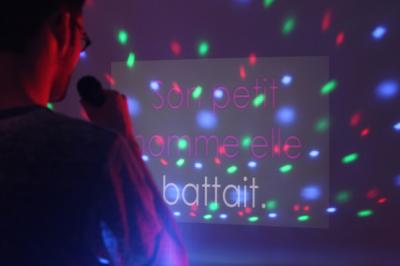
Here, my desire is clearer, whereas in Mediterraneo I repeat this word endlessly like a mantra and at a given moment my voice is interrupted by the submersion of my mouth and the voice under water. So what I am saying goes under water and that word and voice, in particular my voice, becomes something else. In this case, what I expect from the public is for them to experience the sound of this metamorphosis and give to this moment their own interpretation by negotiating, through their own cultural backgrounds, memories, and sensations, its meaning.


[LF]: It’s a very striking image, the one you describe, a voice disappears within water, it is as if body and language, at whose intersection is voice, were sinking together. As if, «beyond voice», could ultimately mean both beyond speech and beyond body. I wonder if this image or gesture is a call for empathy.
[AR]: You started by asking what is voice to me. Well, it’s a tool, not just a sound, but a relational tool, a strategy to be in touch with someone else. Probably, my deepest desire when I use the voice is to be heard and to generate something, to launch something... The best thing that could happen is probably to generate empathy with another, even a stranger, someone whom I never saw before and perhaps would never see again. This is why my work is based on interactive scripts and why I allow for a lot of silence in them, so that the listeners can have enough space for their own memories and sensations. The choice to expose myself in public spaces without reservation is in itself a way of looking for empathy. The work in which that is best made clear is the performance in front of the Tate Modern, Untitled (a stranger, the water and what I am). As I think that even the image of someone splashing me is an image of failure as well, it’s like to be naked in the street and say, ok, this is me, do you want to love me?
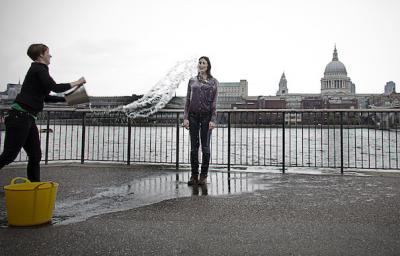
Biography
Published on August 01, 2014
Last updated on April 09, 2024
Topics
Why New Yorks’ underground doesn’t give a fuck about Trump or why satirical rap in Pakistan can be life threatening.
Does a crematorium really have worst sounds in the world? Is there a sound free of any symbolic meaning?
From the political implications of human voice to its potential of un-making sense.
What is «Treble Culture»? How does what one hears affect what one sees?
Snap

